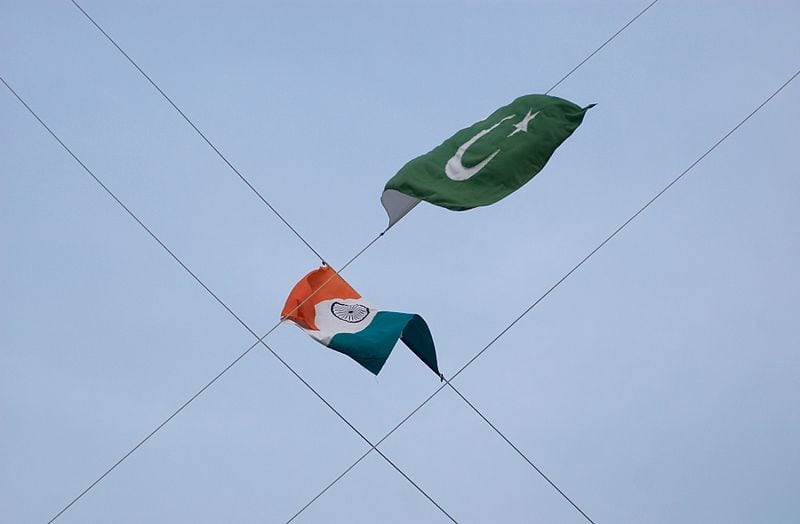 Photo Courtesy of Smooth_O on WikiCommons
Photo Courtesy of Smooth_O on WikiCommons
As Tensions Run Deep and Waters Run Dry: India-Pakistan Water Dispute Prevails
Climate change and water scarcity are once again instigating interstate conflict, this time in South Asia between India and Pakistan over the Kishanganga Hydroelectric Project. As tensions run deep and waters run dry, Pakistani and Indian citizens are looking to the World Bank and the Indus Water Treaty (IWT) for a resolution. However, the IWT’s dated nature and rhetoric are only further complicating the problem.
History:
The Indus Water Treaty was signed in 1960, following nine years of negotiations between India and Pakistan, to mediate water conflict within the region. With the World Bank as a signatory, the IWT established the Permanent Commission of Indus Waters (PCIW) as a “mechanism for cooperation.” The Treaty devised a list of procedures for the countries to take if conflict were to arise:
- “Questions” are to be handled by the PCIW.
- “Differences” are to be resolved by a “Neutral Expert.”
- “Disputes” are to be referred to the International Court of Arbitration (ICA).
Under the IWT, the eastern rivers — the Ravi, Sutlej, and Beas — were allocated to India, and the western rivers — the Indus, Sindh, Chenab, and Jhelum– to Pakistan. Both countries were also given the right of conditional usage of each other’s rivers for domestic power generation, agriculture and other “non-consumptive purposes,” under the stipulation that any construction must not lower the natural flow of water in the river of the other country.
Issue at Hand:
The IWT gained contemporary relevance in 2007, when India began construction of the Kishanganga Hydroelectric Project. Pakistan voiced its concerns about the Project in 2010 and requested the World Bank appoint the ICA to investigate whether or not the power plant’s design was in accordance with the IWT.
Pakistan feared that the construction of the plants would lower the quantity of water that reaches the Chenab and Jhelum Rivers, which would endanger Pakistan’s irrigation system and domestic water availability. The World Bank and the ICA began investigating and construction stopped temporarily.
During its 2013 ruling, the ICA allowed India to continue construction of the Hydropower Project and acknowledged India’s right to divert waters from the Kishanganga for power generation.
Unfortunately, two and a half years of bilateral talks at the PCIW yielded no results. Consequently, Pakistan called for an ICA and India requested a “Neutral Expert.” India and Pakistan agreed that the World Bank simultaneously processing their requests went against the IWT as it “risked contradictory outcomes.” On December 12, 2016 the World Bank paused the processing of the countries’ requests and construction resumed.
Opening of the Dam:
The inauguration of the Kishanganga Hydroelectric Project occurred on May 19, 2018 amid Pakistani protest. Pakistan’s Foreign Office argued that opening the plant without a resolution further violates the IWT and once again requested that the ICA evaluate the project.
The World Bank remains committed to resolving the India-Pakistan water dispute in an “amicable manner,” and denied Pakistan’s request for the ICA. On June 5th, the World Bank asked Pakistan to stop pursuing the ICA dispute and accept India’s offer to appoint a “Neutral Expert” to address the bilateral issue. This would promote productive dialogue between the countries and allow for a conclusion to be made once and for all.
What’s Next?
The World Bank, under the IWT, has the responsibility to protect the rights of the people of the Indus Basin and their access to water. However, the future of the India-Pakistan water conflict currently lies in the hands of the Pakistani government. Pakistan has two options:
- Accept the World Bank’s request to dismiss its ICA request and attempt to resolve the issue bilaterally with India.
- Continue with World Bank mediation, despite its lack of legal enforcement.
The outcome is yet to be determined as negotiations continue. However, reaching a resolution is becoming increasingly urgent as water stress heightens in the region. The IWT being the only treaty that has been faithfully upheld by India and Pakistan, it may be helpful to shift the rhetoric away from politics and begin to treat water development as a common national security issue. This could hopefully promote cooperation, as the Indus Waters are crucial for both countries and the survival and prosperity of its citizens. Addressing climate change and the growing water scarcity issue goes beyond cultural tensions and may be an opportunity for bilateral relations and agreements.
There is a lesson to be learned from the Kishanganga Hydroelectric Project: the importance of updating international laws such as the IWT. Water conflicts do not exist in a vacuum and will intensify in critical regions as climate change worsens. It is foolish to assume that updating the IWT will solve the century-long conflict between Pakistan and India, however so is relying on the nuances of a dated treaty to solve a conflict, particularly between countries that have nuclear capabilities.





